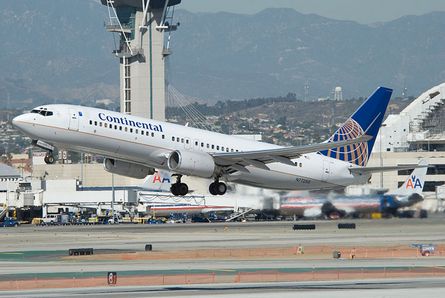The US National Transportation Safety Board's investigation into the fiery Continental 737-500 accident at Denver, Colorado on 20 December reveals no obvious failure mechanism that would have caused aircraft to depart from the left side of the runway during the take-off attempt.
While the cockpit voice recorder had revealed that the pilots called for a rejected take-off after "bumping and rattling" sounds were heard, further analysis of the flight data recorder and correlation with the CVR show that the take-off abort occurred after the aircraft left the side of the runway, says the NTSB. The bumping sounds occurred after the aircraft left the runway as well.
The aircraft crossed a snow-covered grassy drainage basin area and crossed a taxiway and a service road before coming to rest 700m (2,300ft) from the point where it left the runway. Despite a post-crash fire on the right side of the aircraft, none of the 115 occupants were killed.
The crew told NTSB investigators that "all appeared normal until the aircraft began to deviate from the centreline" on the 18:18 departure from Runway 34R. Winds were recorded from 290° at 24kt (44km/h) with gusts to 32kt, presenting a left crosswind condition for the departure.
The captain further told investigators that the aircraft "suddenly diverged" to the left and "attempts to correct the deviation with the rudder were unsuccessful". The pilot said he also "briefly attempted to return to the centreline" using the tiller.
A preliminary examination of the aircraft's rudder system revealed no abnormalities. The FDR shows no evidence of pre-impact malfunctions with either engine. The board's findings also show both engines were commanded into reverse thrust following the rejected take-off.
 |
|---|
Source: Flight International























